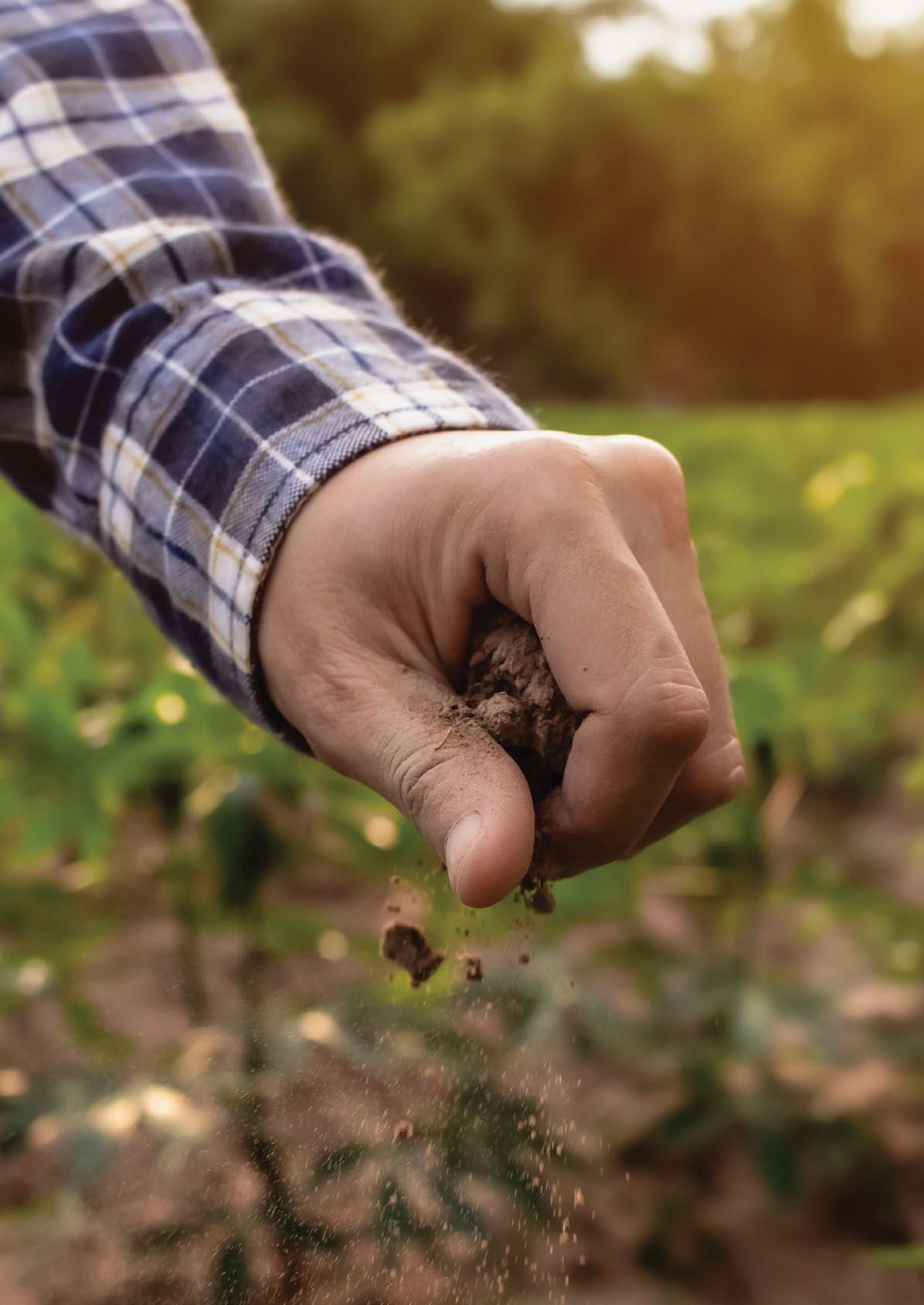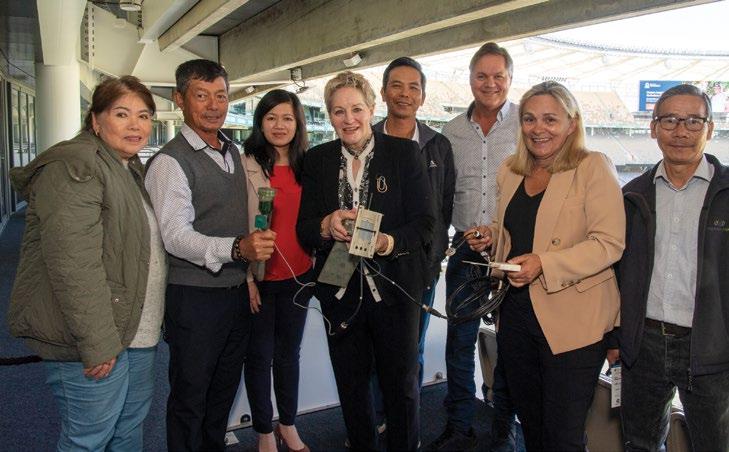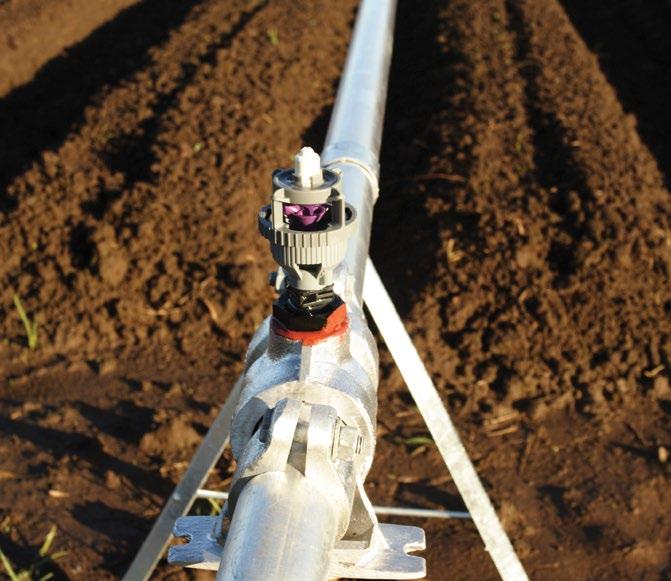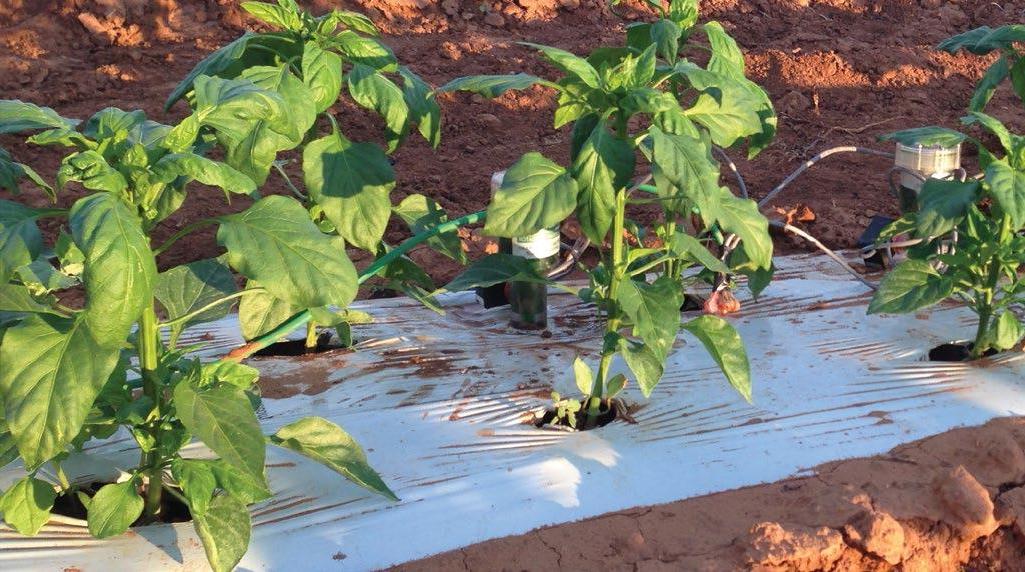
6 minute read
Soil moisture monitoring
f STATE government propose a 10 per cent reduction to groundwater allocations from 2028.
Advertisement
reducing input costs and improving produce quality
BY TRUYEN VO REGIONAL DEVELOPMENT OFFICER, VEGETABLESWA
Highlights
• Adopters used digital soil moisture monitoring technology. • Factors determining farmers’ adoption responses to low produce quality and water and fertiliser use efficiency are identified. • Strategies to improve water and fertiliser use efficiency in northern suburbs are recommended.
Vegetable production of Perth’s Northern Suburbs is on sandy soils, which are some of the most infertile soils in the world. Adding to the challenges of the region is a state government proposal of a 10 per cent reduction to groundwater allocations from 2028 and gaps in water and fertiliser use efficiency among growers.
In order to bridge the gap, VegNET WA collaborated with two vegetable growers in the area to set up demonstrations using digital soil moisture monitoring technology to assist with decision making in irrigation to improve the water and fertiliser use efficiency.
Innovation extension strategy

The innovation extension is designed to help grower participants go through a 5-stage process included: 1 Knowledge (expose growers to water and fertiliser use efficiency concepts and assist them in understanding the benefits). 2 Persuasion (the forming of a favourable attitude to it). 3 Decision (commitment to its adoption). 4 Implementation (putting it to use). 5 Confirmation (reinforcement based on positive outcomes from it). The extension techniques employed for knowledge transfer included: field day, workshops, grower meetings, phone chat, one-on-one knowledge and information transfer via farm visits, and on farm demonstrations.
The introduced innovation to improve water and fertiliser use efficiency imbeds a few scientific concepts, such as the function of water leaking against the water application time, the effective root zone, the relationship between water application time and water leaking past the root zone. Growers can now monitor soil moisture from their smartphones. These scientific concepts were translated to visual illustration and simple practices such as the dye test and digging holes to expose the root system. Soil moisture monitoring technology has traditionally been complex however their are now user friendly systems that growers can easily operate and monitor from their smart phones. Suggested practice changes as a result of soil moisture monitoring have been as simple as reducing water leakage by splitting water applications and/or shortening watering times.
These suggested practice changes can be adopted in part or in full depending on the observed results and the difficulty of implementation.
Growers’ attitude changes
Integrating the records of grower participation in extension events such as field day, workshops, grower meetings, farm visits and grower responses to the phone discussion with development officer throughout the project course helped to determine growers’ preferable learning styles, attitude changes and the influencing factors. Assessing the growers’ commitment to practice changes during and after the farm demonstrations also helped to figure out their attitude changes and level of commitment to the adoption of introduced technologies.
Case studies results
The recorded growers’ preferable extension methods are presented in Table 1.
Both grower participants preferred practical transfer of knowledge and technology most. This way of technology learning involves one-onone contacts via farm visits, on-farm illustration, demonstrations, and phone discussion. The one-on-one contacts allowed RDO-grower interactions to transfer tacit knowledge that included skills, insights, and personal experiences embodied in the minds of individuals, thus not easily shared through less personal methods. Both growers in these case studies have learned the effective root zone concept and the water leaking issue by digging the soil to expose the root system and by observing the wet soil below the effective 30cm root zone.
Virtual contact via phone and text message mainly helped to maintain RDO-grower relationship. Only explicit knowledge expressed in words and numbers could be exchanged through this extension methods.
Group meeting and field day required growers to leave their farms, which is difficult for some growers. While one grower of these study cases has participated in all extension events during the project to take up technological information, the other always welcomed extension officer visits to his farm and phone calls but never attended meetings, nor workshops. Beside the age difference, other factors such as hesitation to meet with a group of people and current farm labour shortages prevented him from going to meetings or workshops.

f USING digital soil moisture monitoring technology to improve water use efficiency.
TABLE 1. GROWERS’ PREFERABLE EXTENSION METHODS.
Adoption process Carabooda field day
Phone discussion Face-to-face information transfer Group meeting Demonstrations One-on-one evaluation of trial results
1 2 1 2 1 2 1 2 1 2 1 2
Knowledge Water leaking against time Root zone concept
Persuasion Fertiliser loss due to leaking Suggestion for practice changes
Decision Implementation Confirmation
Lack of language assistance is also a limiting factor to grower participation in meetings. While language assistance is not always provided in all activities during field days, both growers enjoy interacting with the Vietnamese RDO in their own language for information and technology transfer.
2. Innovation adoption
Innovation adoption refers to actions of putting suggested practices/technologies into use (implementation) and reinforcement based on positive outcomes from it (confirmation). These case studies showed that although both growers acquired some knowledge and information of introduced innovation by participating in extension events, neither of the two participating growers adopted the innovation until demonstrations were set on their farms. The demonstration of water leaking against time and the visual observation of the effective root zone provided opportunities for them to see the water leaking beyond the root system just 20–25 minutes after the watering was started. The evaluation of crop performance in terms of better crop appearance and increased percentage of marketable produce impressed growers, which led to the reinforcement. Both growers committed to reduce irrigation time from 60–90 minutes each irrigation time to 25 minutes. However, the targeted practice changes were splitting water application twice a day and 20 minutes each time. This was not achieved because it required more labour because the irrigation valves at the demonstration site were manually operated. The additional labour requirements for splitting water applications were further compounded because the grower manages three farm properties.
Face-to-face discussion is the most effective extension method. Strategies to improve innovation adoption in Northern Suburbs
The results of these case studies have suggested ways to improve innovation adoption in water and fertiliser use efficiency by growers in the Northern suburbs of Perth. These include: • Face-to-face discussion is the most effective extension method for information and technology transfer to growers. • Demonstration is vital to innovation adoption. While setting up demonstrations on individual grower properties case studies is impracticably, creating demonstrations for small clusters of 5–10 growers is a practical solution that may lead to increased adoption. • Language assistance is essential to those growers whose second language is English. • Promoting the recentlyannounced government grants available to grower the Northern suburbs of Perth is an attractive option to encourage improved water use efficiency. These grants include assistance to enhance irrigation knowledge, infrastructure and controller systems, and soil amendment to increase soil water holding capacity.
MORE INFORMATION
Truyen Vo, Regional Development Officer, phone (08) 9486 7515, 0457 457 559 or email truyen.vo@vegetableswa.com.au











